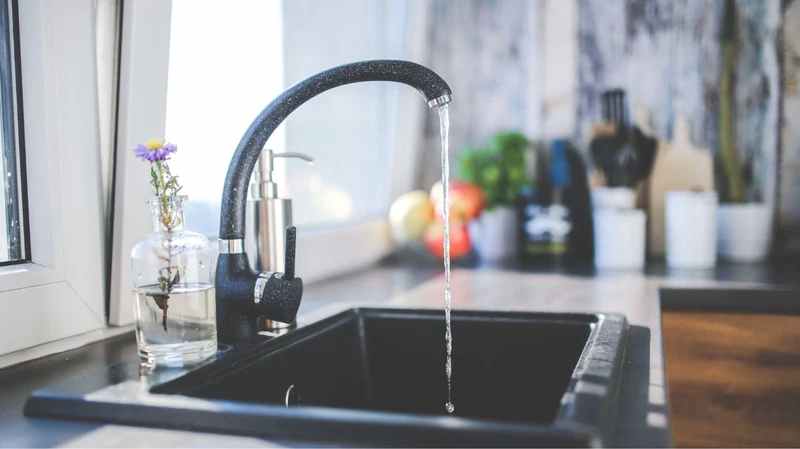As people’s demand for the quality of household drinking water continues to increase, there are various types of whole house water filter on the market, and reverse osmosis water filters are undoubtedly the best water filter system currently available. There are currently two mainstream types of water filters on the market, tankless water filters and tank water filters. So what are the benefits of these two types? We will explain in the following article.
What is the Tank Reverse Osmosis System?
A tankless RO system is a type of water filtration system that uses a process called reverse osmosis to remove impurities from water. Unlike traditional reverse osmosis systems that use a storage tank to hold purified water, a tankless system does not have a storage tank and purifies water on demand.
In a tankless reverse osmosis system, water passes through a series of filters, including a semipermeable membrane, that removes impurities such as minerals, chemicals, and bacteria. The purified water is then sent directly to a faucet or other water outlet for immediate use.
The main advantage of a tankless reverse osmosis water system is that it provides a continuous supply of purified water without the need for a storage tank, which can take up valuable space and require regular maintenance. Additionally, because the purified water is not stored, there is less risk of bacteria growth and contamination. However, tankless systems may have lower flow rates than traditional systems, which can be a consideration for households with high water usage.
However, Tank reverse osmosis (RO) systems have several disadvantages, including:
Wasted water: Tank RO systems typically waste a lot of water during the filtration process. The ratio of filtered water to wastewater can be as high as 4:1, meaning that for every gallon of clean water produced, up to four gallons of wastewater are generated. Slow filtration: Tank RO systems can be slow at filtering water, especially if the water pressure is low. The filtration process can take anywhere from 30 minutes to several hours to produce a gallon of clean water.
What is the Tankless Reverse Osmosis System?
In a tankless RO water system, water passes through a series of filters, including a sediment filter, a carbon filter, and a semi-permeable membrane. The membrane removes impurities such as dissolved minerals, salts, and heavy metals, leaving behind clean, purified water. The purified water is then delivered directly to a faucet or other point of use.
Tankless RO systems are popular for several reasons. They are highly efficient and can remove up to 99% of contaminants from water, including bacteria, viruses, and other pathogens. They also take up less space than traditional RO systems, making them ideal for small homes or apartments. Additionally, tankless RO systems are typically easier to install and maintain, as they do not require a storage tank or regular tank cleaning.
Here are some of the pros and cons of using a tankless reverse osmosis:
- Continuous water supply: Unlike traditional RO systems that use a storage tank, tankless systems provide an unlimited supply of clean water on demand, as they filter water directly from the tap.
- Space-saving: Tankless RO are smaller in size and require less space than traditional RO systems, making them ideal for homes with limited space.
- Improved water quality: Tankless RO systems remove more impurities from water, including lead, fluoride, arsenic, and other harmful substances, which can improve the overall quality of drinking water.
- Lower maintenance: Tankless RO water filter require less maintenance compared to traditional systems as there is no storage tank to clean or replace.
But there are still some disadvantages: such as,
- Higher cost: reverse osmosis tankless system tend to be more expensive than traditional RO filter, which may be a deterrent for some homeowners.
- Slow water flow: Tankless RO systems can have a slower flow rate, which means it may take longer to fill a glass or pitcher. Limited capacity: And could not store water, if home water paused temporarily.
Tankless VS Tank Reverse Osmosis System, Which is Better?
There are several factors to consider:
- Water Demand: A tankless RO system is suitable for households with low to moderate water demand, while a tank-based RO system is more suitable for households with high water demand. The tank-based system can hold a larger volume of water, allowing for a higher flow rate and fewer interruptions in the supply of treated water.
- Space: Tankless RO systems are typically smaller in size and can be installed under the sink, while tank-based systems require space for a storage tank. If you have limited space, a tankless system may be a better option.
- Maintenance: Tank-based RO systems require periodic maintenance, such as tank cleaning and filter replacement, while tankless systems typically require less maintenance. Consider how often you are willing to perform maintenance tasks when choosing between the two systems.
- Water Quality: Both tankless and tank-based RO systems are effective at removing impurities from water, but a tank-based system may be more effective at removing certain contaminants due to the longer contact time between the water and the filter. If you have specific water quality concerns, consult with a water treatment professional to determine which system is best suited for your needs.
- Cost: Tankless RO systems are generally less expensive than tank-based systems, but they may not be as effective for larger households with high water demand. Consider your budget and water demand when choosing between the two systems.
Overall, the choice between a tankless and tank RO system depends on your household’s water demand, space, maintenance preferences, water quality concerns, and budget.
Lynn Martelli is an editor at Readability. She received her MFA in Creative Writing from Antioch University and has worked as an editor for over 10 years. Lynn has edited a wide variety of books, including fiction, non-fiction, memoirs, and more. In her free time, Lynn enjoys reading, writing, and spending time with her family and friends.















